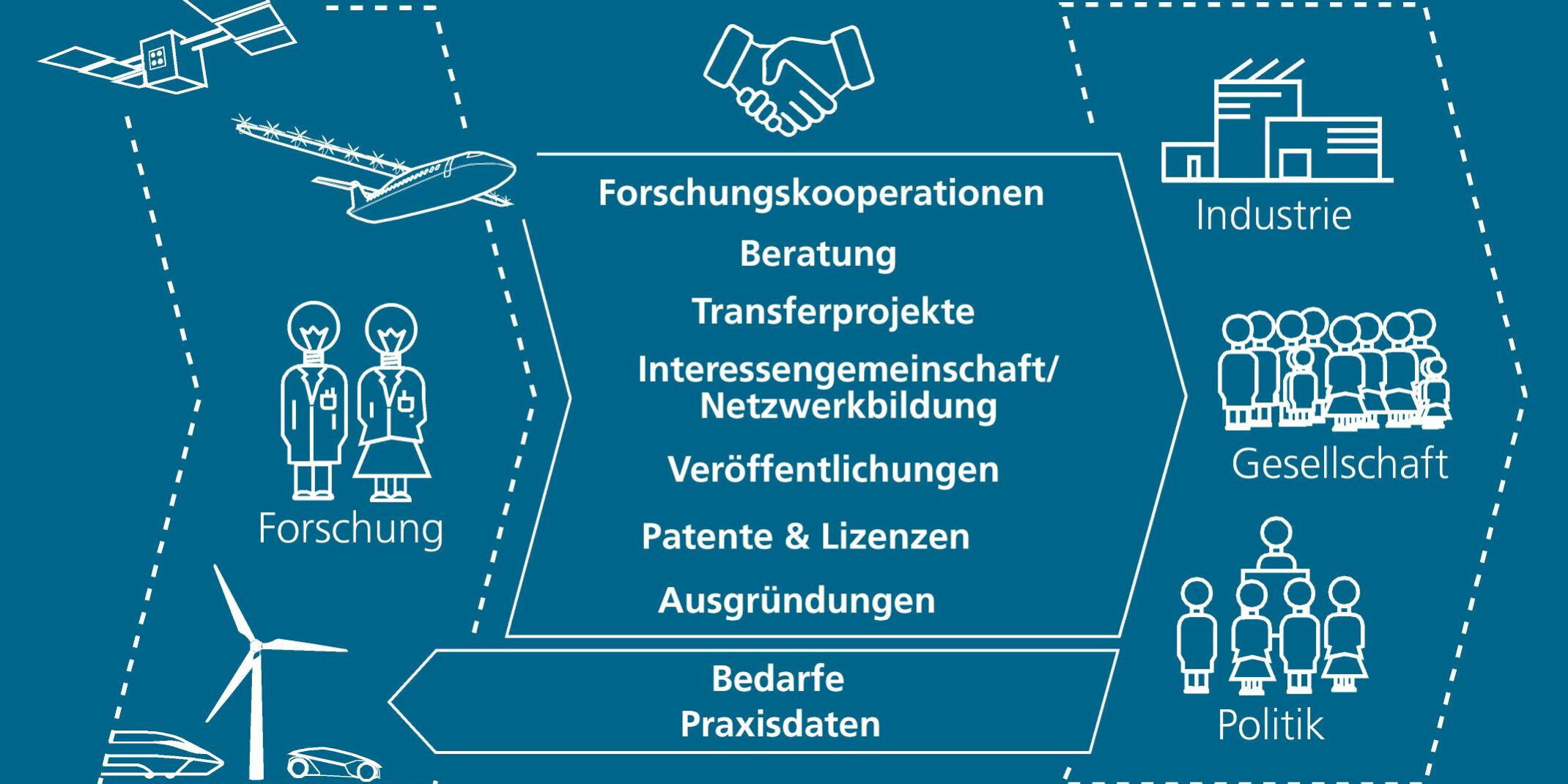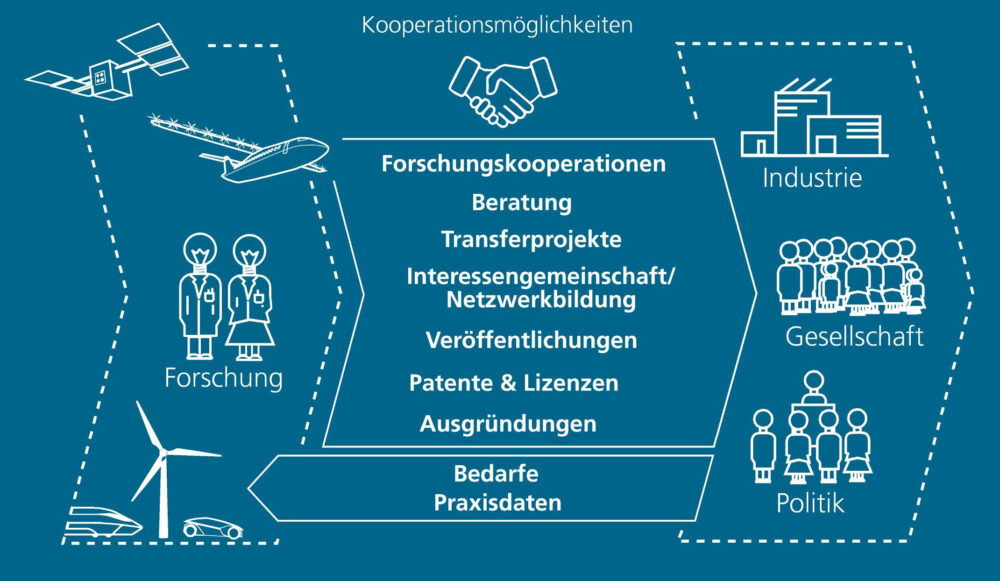The transfer of research results into industrial utilisation is a key objective of DLR. The Lightweight Design Innovation department supports this transfer process for the topics of the Institute of Lightweight Structures. As a link to industry, the department’s interdisciplinary team identifies high-potential research results and supports the transfer of technologies into application. The central point of contact is the Institute’s Service Desk, which can be used to establish initial contact for any type of transfer. The transfer of research results into specific industrial fields of application can take place in a variety of ways.
Publications
The classic method of passing on new knowledge is to publish research results. In particular, the presentation at conferences and in specialised journals allows industrial partners to identify new knowledge to answer existing challenges. In addition, publication enables direct contact with the authors, which can lead to new partnerships.
The DLR elib online library provides an overview of all publications.
Patents & licences
The DLR places the research results in a concrete application context via published patents. In this way, their potential uses for industrial partners can be identified and direct exploitation through licences is possible. For example, the DuraAct and DuraAct Power transducers are among the Institute’s developments that have been manufactured and marketed for years under licence on our patent. A number of patents from our company are available for transfer through licencing.
Research projects
The next step in creating industrial added value with our research results is to carry out joint research projects with companies. These projects are usually linked to the aim of answering research and technology questions in co-operation with the industrial partner. Project content can include, for example, the technical evaluation of different solutions or research into new solutions. This always strengthens the partner’s competitiveness. This variant is common in the context of various funded projects and is a well-established and common variant for knowledge transfer at our institute.
Community of interest & networking
In order to maintain and expand this high level of cooperation, we continuously present the Institute’s research achievements at trade fairs and in networks and invite people to participate in joint projects. For example, the Forum for Hull Technology was created specifically for this networking work from within the institute. The Innovation Lab for Additive Extrusion (EmpowerAX) also focusses part of its work on maintaining and coordinating cooperation between all research and project partners in the field of additive extrusion.
Sponsorships have also proven to be a very effective method of transfer. This model has been implemented in the past with Airbus as well as with companies from the energy and transport sectors. The close interlocking through the sponsor is a very good start for the transfer and at the same time helpful for joint research projects.
Research co-operation
Last but not least, DLR supports spin-offs by its own employees, thus creating a further platform for knowledge transfer. Findings from DLR research form the basis of these spin-offs. Spin-offs have a long tradition at our institute. As a commercial manufacturer of high-quality fibre composite components, INVENT GmbH is one such spin-off, which was founded in 1996 and has grown into a leading medium-sized company in the field of fibre composite production. However, there have also been a number of spin-offs in recent years in which processes or products are offered commercially. DLR provides a range of support services for this transition from DLR to newly founded companies. This provides the founders with the most focussed start possible as a solid basis for founding a company.
Spin-offs
Last but not least, DLR supports spin-offs by its own employees, thus creating a further platform for knowledge transfer. Findings from DLR research form the basis of these spin-offs. Spin-offs have a long tradition at our institute. As a commercial manufacturer of high-quality fibre composite components, INVENT GmbH is one such spin-off, which was founded in 1996 and has grown into a leading medium-sized company in the field of fibre composite production. However, there have also been a number of spin-offs in recent years in which processes or products are offered commercially. DLR provides a range of support services for this transition from DLR to newly founded companies. This provides the founders with the most focussed start possible as a solid basis for founding a company.








